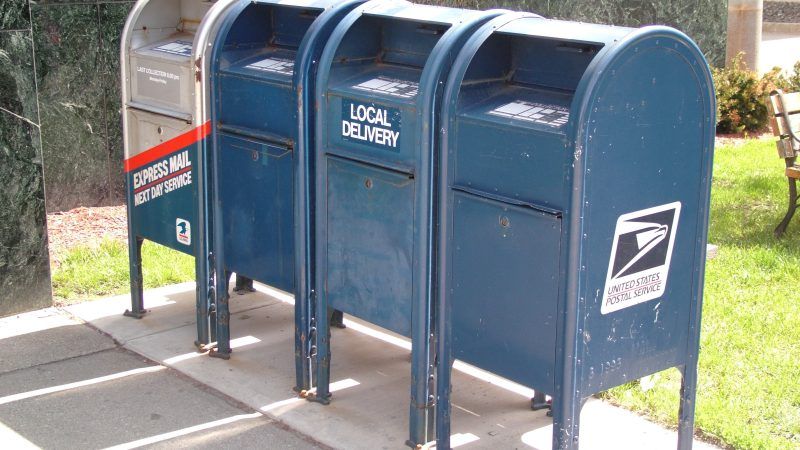After Losing Nearly $4 Billion Last Year, Postal Service on Track to Lose $7 Billion This Year
Revenue and mail volume is basically flat, but the USPS' operating expenses are out of control.

The U.S. Postal Service lost more than $2 billion during the second quarter of the fiscal year, putting it on track to finish the current year more than $7 billion in the red—way worse than the nearly $4 billion in losses it posted last year.
In its quarterly fiscal report, published today, the Post Office reported small decreases in mail volume and overall revenue compared to the same quarter of 2018. Its big losses are driven by a sharp increase in expenses, primarily workers' compensation costs, pension liabilities, and payments for retirees' health benefits.
For the fiscal year that ended on September 30, 2018, the Postal Service recorded a then-record loss of $3.9 billion. At the time, Postmaster General Megan Brennan bluntly declared that the agency "cannot generate revenue or cut enough costs to pay our bills" and predicted that the agency would continue to post losses at "an accelerating rate."
After losing $1.5 billion in the first quarter of the current fiscal year, the Post Office has now lost $3.6 billion in just six months. That comes even after an increase in the cost of sending first-class mail. The cost of a stamp jumped 10 percent* on January 1, and other mailing services increased by 2.5 percent on average. The agency predicted that those changes would increase revenue by $1.7 billion—but expenses have been outpacing revenues by a wide margin.
It's not exactly news that personnel costs are driving the Postal Service's financial problems. The agency has $100 billion in unfunded pension liabilities and "no clear path to profitability," according to a White House assessment report released last year. The Post Office has lost $69 billion since 2007, and it probably would have gone bankrupt long ago if it were a private entity—FedEx and UPS certainly wouldn't exist today if they were posting annual losses of $4 billion. And they pay taxes, which the Postal Service does not.
As Reason has been arguing for literally 50 years, the postal service should be privatized. It would probably require significant restructuring and service changes for the privatized service to net a profit, and the federal government would likely need to absorb the current debts. That means it will only become more difficult to free the Post Office from government control as the agency's debt mount. Still, it could net a windfall to help pay off the service's massive liabilities—the Cornell economist Richard Geddes has found that a postal IPO could raise $40 billion.
"Privatization would give the [Post Office] the flexibility to save itself, allowing access to debt and equity markets for capital investment—a lifeline for a company that has long been short of cash and deferring the purchase of vital new vehicles and technologies," Chris Edwards, an economist at the Cato Institute, writes in National Review.
Unfortunately, some members of Congress seem more interested in having the Postal Service expand its losing business into new areas. An overhaul of banking and credit card systems floated this week by Sen. Bernie Sanders (I–Vt.) and Rep. Alexandria Ocasio-Cortez (D–N.Y.) would effectively convert the Post Office into a bank of sorts, offering checking and savings accounts.
In other words, it would take a government agency that's already failing to compete with private sector alternatives in the shipping industry (despite massive structural advantages) and let it fail in competition against private banks as well—and would force poorer Americans to rely on that floundering institution as their primary provider of banking services. As Reason's Peter Suderman wrote yesterday, this is "not a new idea, but it is a bad one."
Republicans aren't likely to go for that plan, but fixing the Post Office's problems don't seem to be high on their list of priorities either. The Trump administration included the Post Office in a 2017 report highlighting services that could be privatized, but that survey seems to be mostly gathering dust right now.
The Postal Service, meanwhile, continues to gather debt.
CORRECTION: This article originally stated that the Post Office implemented a 5 percent increase in the price of a First Class stamp in 2019. The increase was from 50 cents to 55 cents, or 10 percent.


Show Comments (97)